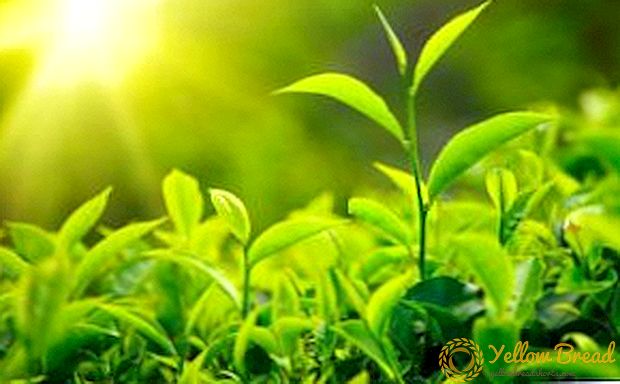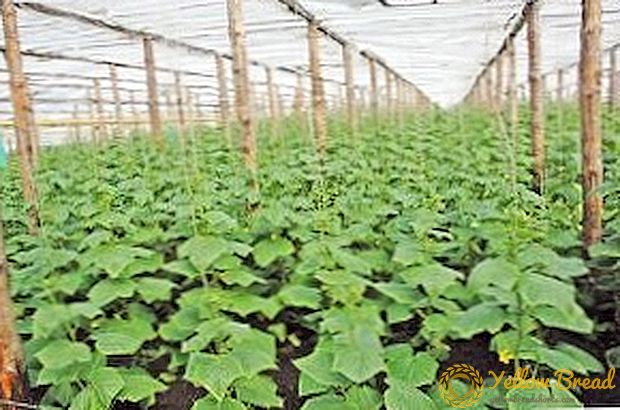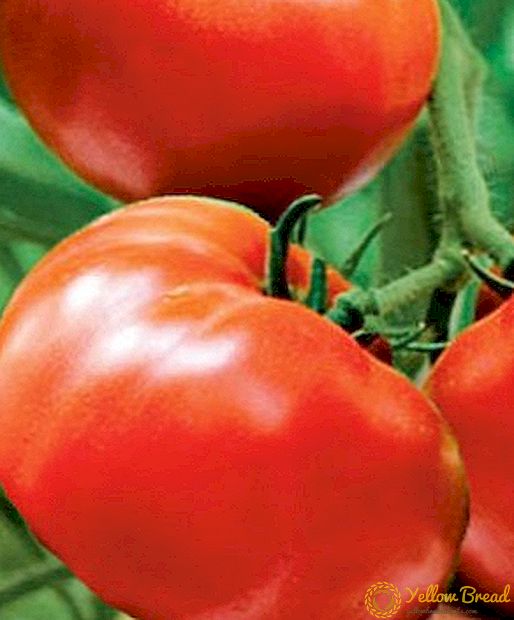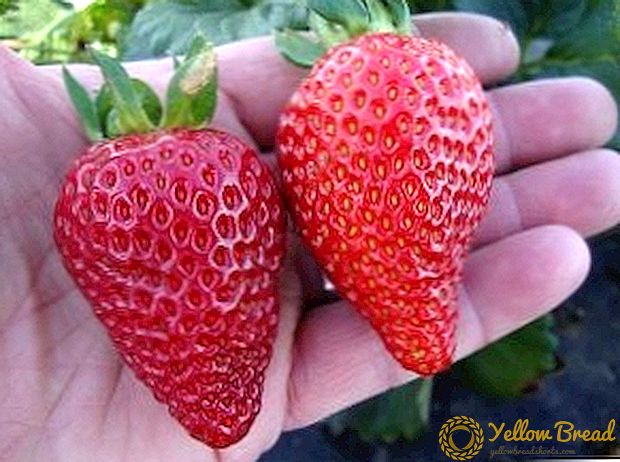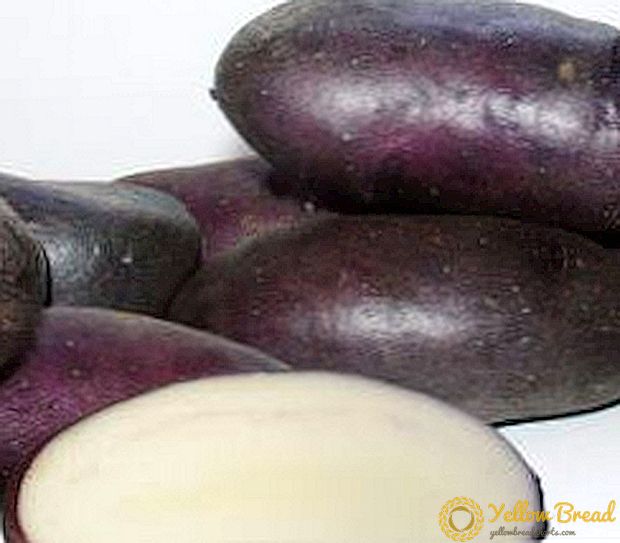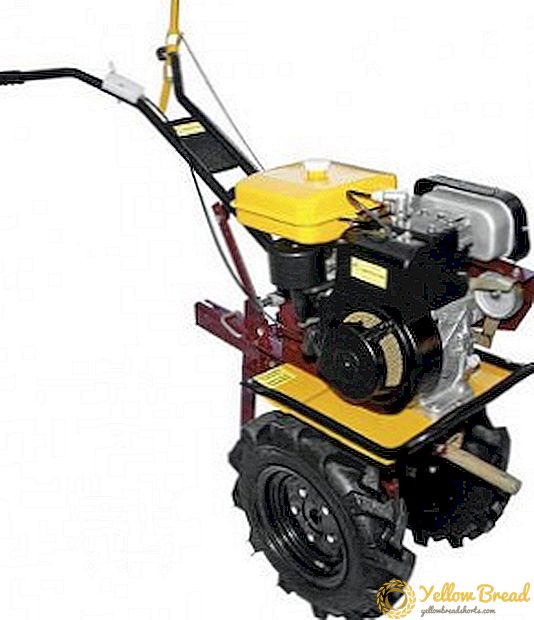
Connoisseurs of this noble drink know that the taste, color and aromatic bouquet of wine depend on the grape variety.
Visiting a wine tasting, you can fully experience the variety of taste and benefits of red or white grapes.
In this article we will try to consider the most popular wine varieties of this culture, so that your winemaking brings the expected result.
- "Chardonnay" - the main variety for the preparation of sparkling wines
- The grape variety "Bianca" ("Bianco")
- "Regent" - the best brand of vintage wines
- "Pinot Noir" - one of the oldest varieties
- "Saperavi" - an ancient variety originally from sunny Georgia
"Chardonnay" - the main variety for the preparation of sparkling wines

Who is unfamiliar with this white grape variety? Its beautiful sonorous name Chardonnav takes its roots from Burgundy and Champagne. And the film “D, artanyan and the Three Musketeers” is immediately recalled. Wines from "Chardonnay" are distinguished by the richness of secondary and tertiary flavors, which are already manifested in the process of preparing the drink.
Depending on the technology of preparation, they can be as light, with the aroma of white fruits, hints of citrus and flowers, as well as rich, sugary, with a taste of honey or sweet pastries.
Experienced winemakers say that this grape is perfect in all respects for making wine, because its berries are distinguished by their resistance to various influences. It is impossible to make a bad drink from this variety.
Planting grape seedlings should begin either in spring or autumn. The main condition in the spring should be a good warm-up of the earth and stable warm air temperature, and in the autumn - an early onset of frosts, so that the planted bush can adapt well to external factors.
In terms of ripening Chardonnay can be attributed to the early grades, only 130 - 150 days subject to CAT 2800 C - 3200 C.
Vine matures by mid-September. Therefore, for its planting it is better to choose regions with a short growing season and low rainfall in the autumn, otherwise the vine will be damaged by the returning spring frosts.
To delay ripening, in other regions, the vine is pruned after the kidneys swellthat causes a certain stress in the bush and for 14 days slows down the process of ripening the bunch.
Chardonnay refers to the average grape varieties.The average mass of the berries is about 3g, and the average mass of the bunch is about 180g. The number of fruitful shoots per bush is about 52%.

Wines from Chardonnay variety are rich in flavors and tastes. Depending on the method of preparation, you will find notes of honey, vanilla, white flowers, marzipan, pear, mango, pineapple and even honeysuckle. Given the long exposure in wine appear shades of hazelnut and dried fruit.
When cooking wine in oak barrels - in the taste felt notes of butter, due to the transformation of malic acid into butter, and fried toast. Oak barrels are a priority for making this type of wine.
The taste of the drink depends on the place of growth of the oak, its age and variety, as well as its level of roasting. To further improve the taste of wine, oak chips are added to the wort for fermentation.
The wine aged in the glass will be complemented by the aroma of cream, hazelnuts and oriental spices.
Since this variety needs a good fertile composition of the soil, it is necessary to allocate more places than usual for each bush when planting.so that the vine must be open to sunlight from all sides and not subjected to shading near planted bushes or trees.
Clay, limestone or chalky soils are preferred for planting. When planting in excessively hot regions, wines from Chardonnay are inexpressive and flat, and when berries are ripe in cold weather, the drink is characterized by high acidity.
Frost resistance Chardonnay average. Vines of grapes can withstand temperatures as low as -20 ° C. Therefore, in the northern areas of growth, these grapes should be sheltered for the winter, and in the southern ones - they winter well enough without insulation.
This variety is quite well adapted to any conditions, but a bit picky about the mineral composition of the soil. If she is poor in food, it will not have the best effect on the quality of the grapes.
Unfortunately, Chardonnay is extremely susceptible to mildew, gray mold, leafworm and oidium, which provides for constant protection of the vine. It is also susceptible to damage by ticks. The shoots of the planted bush ripen well. The formation of the vine is preferably done shtambovo, with a large supply of perennial shoots.Pruning is carried out on 4 buds.
The grape variety "Bianca" ("Bianco")

White grape variety is from Hungary. The ratio of sugar and acid in the juice is good enough for a technical grade - 28-7%. This makes the Bianca variety high-quality for the preparation of any white wines, from semi-sweet dessert to dry with a high alcohol content.
In addition, Bianca is used to prepare brandy alcohol and grape vodka.
In the south of Russia, Ukraine and Belarus, it is already possible to start planting Bianca from the end of March. The main condition is that the soil is heated to +8 ° C, and the average daily air temperature is up to +10 ° C. In the middle lane, the best time for planting will be mid-April - the first half of May.
When planting in autumn, one should also take into account the particular climate in the region. The best option is October, when the vine has already thrown off the foliage, the soil is not too wet, and the first frost is still far away.
By the time of maturation Bianca is early variety. In the Kuban, you can harvest in August.
The variety Bianca has a rather high fruitfulness and yield. With a single-stem small cupped bush, fertility is the highest and makes up 83% of fruitful shoots. With increasing distance between the bushes, the yield is reduced by 2 times.
Pulp Bianchi is very sweet and juicy. Taste characteristics of wine harmonious and full, differ depending on the place of growth and may have notes from floral, exotic to honey with a creamy tinge.
When planting Bianchi bushes can be placed quite tightly. The distance between the seedlings is acceptable 0.5-0.7m, and between rows 1.5-2m. In this case, it is better to plant cuttings with the removal of a small bowl. Such an intensive plantation will bear fruit well for 10-12 years.
Features care. Bianca good frost resistant variety. The vine is able to withstand up to - 27 C, which greatly simplifies the care of grapes in the autumn-winter period. The load of eyes can be observed moderate (about 3 eyes during trimming). This variety is sufficiently resistant to most fungal diseases, and therefore requires a small preventive treatment.
"Regent" - the best brand of vintage wines

Regent variety is originally from Germany, where it was bred in 1967. Differs in black and purple color of berries and good juiciness. In Germany, this grape produces vintage wines. Vine has a restrained growth force. Clusters weighing up to 300g, cylindrical and medium in size.
There is no unequivocal answer to the question when it is preferable to plant grapes.The advantage of planting in the spring is a long sunny period to strengthen the seedling, especially if it was infected with mold or rot.
The planting dates are extended from mid-March to early summer, depending on the climate in the region. During the autumn planting, the growing season is significantly extended, the problem of storing the prepared seedlings until spring is also eliminated. But it is necessary to take particularly effective measures to shelter a young vine for the winter.
According to maturity, it belongs to medium-late varieties (about 135-140 days).
High yield. The number of fruitful shoots on a bush is up to 80%, and the number of clusters per shoot is 1.4.
The taste of Regent berries is harmonious with herbal notes. From them wine of the highest class turns out. The Germans put it on a level with Pinot Noir. Due to the capacious amount of tannins in the drink, Regent wines have a rich southern flavor.
Pink - famous for the aroma of raspberries and summer fruits, and red - rich dark color and density of the drink. Depending on the age of aging, the quality of this wine only improves.
Distinctive features when planting grapes Regent no.But, nevertheless, it is worth considering the proximity of the location of groundwater at the site and, if necessary, lay a good drainage to the bottom of the landing pit.
The best option in the southern areas is landing on the edge, or on a slope. Thus, the grapes will be illuminated by sunlight evenly. If this is not possible, then it is better to grow a vine near the wall.
So the grape bushes will receive the missing heat from the heated stone. Forming a bush is allowed any medium volume. The load on the vine can be from medium to large.
This grape variety is extremely resistant to frost and withstands winter temperatures of up to -27 ° C, which does not require additional covering measures in the fall.
It is well resistant to mildew, gray rot, oidium, phylloxera. There are vineyards where Regent is grown without any chemical treatments for pests and diseases, which makes it possible to produce an ecologically pure product.
"Pinot Noir" - one of the oldest varieties

His homeland, like Chardonnay, is Burgundy. The clusters are rather small, from 7 to 12 cm in length, and from 5 to 8 cm in width, of cylindrical or cylindrical conic shape.
The berries are about 15mm in diameter, dark blue with a bluish bloom.The skin is thin, but rather durable. The flesh is juicy, sweet and tender. Juice is colorless. The taste is delicate and harmonious.
A special feature of the Pinot Noir variety is the shape of its leaves - they are distinguished by coarse wrinkling and wide side open cuts.
The timing of planting this variety is no different from all other varieties. Pinot Noir grapes can be land like a spring (March 15 - May 15), so in the fall (end of September - beginning of November).
This grape variety is a late species. Its ripening period is about 5 and a half months with SAT 3000 C. The technical maturity of this grape comes by the end of September.
Pinot Noir is extremely sensitive to landing conditions. If the vineyard grows in a hot climate, the bunch will spice too quickly, not allowing the bouquet to develop.
Yield Pinot noir not high - only about 55 c / ha. But, under favorable conditions and care, it can reach 103 c / ha. The number of fruitful shoots on a bush is from 60 to 90%. The number of clusters on the fruitful shoot is about 1.6, and on the developing - 0.9.
This grape variety produces wonderful white, rosé or red wines - table and sparkling, with a light or rich, dense or fruity aroma.It is impossible even for an experienced winemaker to predict in advance what kind of taste a drink will have, since this variety is extremely unpredictable.
In successful years, Pinot Noir wines are called elegant, with subtle charm and aroma. They are one of the most expensive wines with excellent exposure, for true connoisseurs of taste.
Choosing time, it is necessary to consider the climate of the region and the quality of planting material. When late planting, after the end of the recommended periods, seedlings develop poorly and lag behind in growth. Also, when planted in waterlogged soil, grapes can die.
Pinot noir reacts negatively to flat and low relieftherefore, to lay a vineyard, it is advisable to choose gentle slopes with moderate dry calcareous soils.
This grape variety has low resistance to mildew and oidium, and to gray rot and a seedling moth is higher. With the defeat of the roots of phylloxera, the grape bush dies for 6-8 years after planting, therefore, this grape variety needs to be treated for diseases and pests.
It is not resistant to frost (it can withstand up to –20 ° C), but in case of strong spring frosts, damage to the main ocelli is possible. In this case, shoots develop from replacement buds.This feature allows you to restore the yield next year. When pruning the vine leaves 2-3 peepholes.
"Saperavi" - an ancient variety originally from sunny Georgia

Berries Saperavi medium and large size, dark blue with a gray wax bloom. The skin is thin, and the flesh is rather juicy pink. Aging shoots good. Growth bushes above average. The average bunch weight is about 150g. It has a conical, sometimes irregular, branched or loose form.
Cooked wine rich dark color has a rough taste and an unusual aromatherefore requires a long exposure.
Since the advantages of this variety are revealed precisely when planted in warm regions, in the spring it can be planted starting from the end of March, and in the fall - it can be planted from September to November.
Refers to late varietiesbecause the growing season is 5 months. The period from the start of bud break to full maturity of the berries under CAT conditions of 3000 C is about 150 days.
The yield of Saperavi is 80-100 c / ha.
Juice initially contains an excess of acids, which are often stored during fermentation and aging, which gives a rough taste to young wine. With a long exposure from 5 to 30 years, the quality of the wine improves. It begins to appear creamy taste, aromas of raspberry and dried fruit.
For Saperavi characteristic endurance and the ability to grow in different soils. But, also, it does not tolerate drought and areas with marshy, saline or over-compacted soil. Does not tolerate a thick landing.
The quality of wine from Saperavi strongly depends on the place of its growth. Only in warm climates can the grapes accumulate sugar. If this variety is planted in cool regions, then it is advisable to use it in blends to give the wine a beautiful shade and increase acidity in combination with other varieties.
Saperavi good resistant to oidium, and is moderately resistant to other fungal diseases, therefore, requires additional protective treatment. Especially during the period of heavy rains from infection with gray mold. In terms of frost resistance, it is the leader among Western European varieties, which undoubtedly makes it easier to care for.

